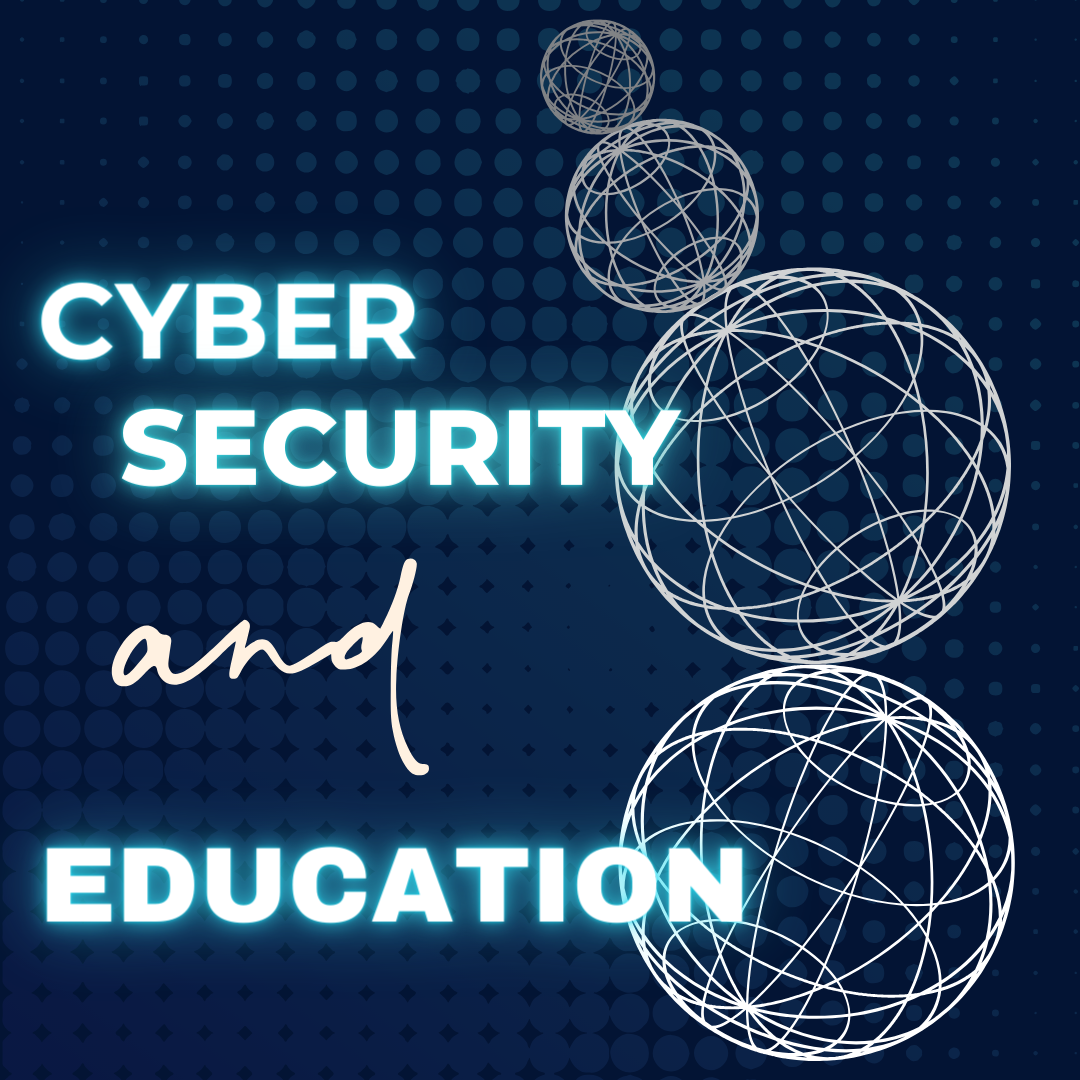The digital age has revolutionized education, opening new avenues for learning and collaboration. However, this evolution comes with its own set of challenges, particularly in the realm of cybersecurity. As educational institutions increasingly rely on digital platforms and technology, the need to safeguard sensitive information and ensure a secure learning environment becomes paramount.
Table of Contents
I. Introduction
A. Definition of Cyber Security in Education
Cybersecurity in education refers to the practice of protecting computer systems, networks, and data within educational institutions from unauthorized access, attacks, and damage. It encompasses a range of strategies and technologies designed to safeguard the integrity of academic processes and ensure the confidentiality of sensitive information.
B. Significance of Cyber Security in the Educational Sector
The significance of cybersecurity in education cannot be overstated. Educational institutions house a vast amount of personal and academic data, making them attractive targets for cybercriminals. A breach in security can lead to severe consequences, affecting students, staff, and the institution’s reputation.
C. Growing Threats in the Digital Educational Landscape
With the proliferation of technology in education, the threat landscape has evolved. Malware attacks, phishing attempts, and data breaches pose significant risks. Understanding these threats is crucial in developing effective cybersecurity measures.
II. The Landscape of Cyber Threats in Education
A. Overview of Cyber Threats
1. Malware Attacks
Malicious software, or malware, is a common tool used by cybercriminals to exploit vulnerabilities in educational systems. From ransomware to spyware, malware can disrupt operations and compromise sensitive information.
2. Phishing and Social Engineering
Phishing attacks often target individuals within educational institutions through deceptive emails or messages. Social engineering tactics manipulate users into divulging confidential information, posing a serious threat to cybersecurity.
3. Data Breaches
The unauthorized access and extraction of sensitive data, such as student records and research findings, can have far-reaching consequences. Data breaches not only compromise privacy but also expose institutions to legal and financial ramifications.
B. Specific Challenges Faced by Educational Institutions
1. Student Privacy Concerns
Protecting student privacy is a top priority for educational institutions. Cybersecurity measures must address the unique challenges of safeguarding minors’ personal information.
2. Intellectual Property Theft
Educational institutions are hubs of innovation and research. Intellectual property theft not only impacts the institution’s competitive edge but also poses risks to broader academic and scientific communities.
3. Disruption of Learning Environments
Cyberattacks can disrupt online learning platforms, causing academic setbacks and hindering the educational process. Ensuring a stable and secure learning environment is essential in the digital age.
III. Case Studies: Noteworthy Cybersecurity Incidents in Education
A. Historical Examples
1. XYZ University Data Breach
In [Year], XYZ University experienced a significant data breach, compromising the personal information of thousands of students and faculty members. The aftermath included legal repercussions and a damaged reputation.
2. High School Cyber Attack
A targeted cyber attack on a high school’s IT infrastructure disrupted classes and led to the loss of critical academic data. The incident underscored the vulnerability of educational institutions to cyber threats.
B. Impact on Students and Institutions
1. Academic Consequences
Students affected by cybersecurity incidents may face disruptions in exams, assignments, and overall academic progress. The aftermath of an attack can create challenges for both students and educators.
2. Reputational Damage
Educational institutions rely on their reputation to attract students and funding. Cybersecurity incidents can result in reputational damage, affecting enrollment numbers and partnerships with other institutions.
IV. The Role of Technology in Education
A. Integration of Technology in Modern Education
Technology has become integral to the educational experience, facilitating online learning, collaborative projects, and research. However, this integration introduces new vulnerabilities that must be addressed.
B. Vulnerabilities Introduced by Technology
1. Internet of Things (IoT) Devices
The proliferation of IoT devices in educational settings, from smart classrooms to wearable technology, expands the attack surface for cybercriminals. Securing these devices is crucial for overall cybersecurity.
2. Cloud Computing in Education
Cloud-based services offer scalability and convenience, but they also present cybersecurity challenges. Protecting data stored in the cloud requires robust security measures and proactive risk management.
V. Regulatory Frameworks and Compliance
A. Existing Cybersecurity Regulations for Educational Institutions
Governments and regulatory bodies recognize the need to establish cybersecurity standards for educational institutions. Compliance with these regulations is essential for maintaining data security.
B. Compliance Challenges Faced by Schools and Universities
Educational institutions often struggle to keep pace with evolving cybersecurity regulations. Limited resources and complex compliance requirements contribute to the challenges faced by schools and universities.
C. The Need for Constant Adaptation to Regulatory Changes
The dynamic nature of cybersecurity regulations requires educational institutions to remain vigilant and adaptable. Regular updates and proactive measures are necessary to stay in compliance.
VI. Best Practices for Cyber Security in Education
A. Implementing Robust Firewalls and Antivirus Solutions
Firewalls and antivirus software form the first line of defense against cyber threats. Implementing robust solutions tailored to the educational context is crucial for preventing unauthorized access.
B. Educating Students and Staff on Cybersecurity Awareness
1. Conducting Regular Workshops and Training
Empowering students and staff with cybersecurity knowledge is essential. Regular workshops and training sessions create a culture of awareness and responsibility.
2. Developing Cybersecurity Curriculum
Integrating cybersecurity into the curriculum ensures that students are equipped with the skills to navigate the digital landscape securely. This proactive approach builds a foundation for cyber-resilient individuals.
C. Collaborative Efforts with IT Security Experts
Educational institutions should collaborate with cybersecurity experts to assess vulnerabilities and implement effective solutions. Regular audits and consultations strengthen the overall security posture.
D. Continuous Monitoring and Incident Response Plans
Continuous monitoring of networks and systems enables swift detection of anomalies. Developing comprehensive incident response plans ensures a coordinated and effective response to cybersecurity incidents.
VII. Cybersecurity Measures for Remote Learning
A. Unique Challenges of Remote Learning Environments
The shift to remote learning introduced new challenges, including diverse home network environments and increased reliance on online platforms. Addressing these challenges requires tailored cybersecurity measures.
B. Securing Virtual Classrooms and Online Collaboration Platforms
Virtual classrooms and online collaboration platforms must be fortified against cyber threats. Encryption, multi-factor authentication, and secure communication protocols are essential components of remote cybersecurity.
C. Addressing Home Network Vulnerabilities
Educational institutions should provide guidelines and support for students to secure their home networks. Awareness campaigns and resources help mitigate the risks associated with home-based learning.
VIII. Investing in Cybersecurity Infrastructure
A. Allocating Budgets for Cybersecurity Initiatives
Financial investment is crucial for implementing robust cybersecurity measures. Allocating budgets specifically for cybersecurity initiatives reflects the institution’s commitment to safeguarding sensitive data.
B. The Role of Educational Leadership in Prioritizing Cybersecurity
Educational leaders play a pivotal role in setting priorities. By recognizing cybersecurity as a strategic priority, leaders create a culture that values and prioritizes data security.
C. Establishing Cybersecurity Task Forces in Educational Institutions
Dedicated cybersecurity task forces bring together experts from various domains to address the multifaceted challenges posed by cyber threats. These task forces should have a mandate to continually assess and improve cybersecurity measures.
IX. Public-Private Partnerships in Cybersecurity
A. Collaborative Initiatives between Educational Institutions and Cybersecurity Companies
Partnerships with cybersecurity companies provide educational institutions with access to cutting-edge technologies and expertise. Joint initiatives can enhance the overall cybersecurity resilience of educational systems.
B. Government Support for Cybersecurity in Education
Governments play a crucial role in supporting cybersecurity initiatives in education. Funding, regulatory support, and collaboration with the private sector contribute to a comprehensive cybersecurity ecosystem.
C. Strengthening the Cybersecurity Ecosystem through Partnerships
Creating a robust cybersecurity ecosystem requires collaboration between educational institutions, government bodies, and private-sector entities. Shared resources and expertise contribute to a collective defense against cyber threats.
X. Emerging Technologies in Educational Cybersecurity
A. Artificial Intelligence and Machine Learning Applications
AI and machine learning offer advanced threat detection capabilities. Implementing these technologies enhances the ability to identify and respond to evolving cyber threats in real time.
B. Blockchain Technology for Secure Academic Records
Blockchain technology ensures the integrity and security of academic records. Immutable ledgers provide a tamper-proof system for storing and verifying student achievements.
C. Quantum Computing’s Implications for Cybersecurity
As quantum computing advances, it brings both opportunities and challenges for cybersecurity. Educational institutions must stay abreast of developments in quantum-resistant cryptography to safeguard against future threats.
XI. Addressing Ethical Concerns in Educational Cybersecurity
A. Balancing Security and Privacy in Educational Settings
Striking a balance between security measures and privacy concerns is crucial. Educational institutions must adopt ethical practices that prioritize student privacy while ensuring robust cybersecurity.
B. Ethical Use of Student Data
Transparency and consent are paramount when handling student data. Ethical guidelines should govern the collection, storage, and use of personal information to maintain trust within the educational community.
C. Transparent Communication with Students and Parents
Open communication about cybersecurity measures builds trust. Educational institutions should regularly update students, parents, and staff about ongoing efforts to enhance cybersecurity and address potential concerns.
XII. The Future of Cybersecurity in Education
A. Anticipating Evolving Threats
The landscape of cyber threats is dynamic, requiring educational institutions to stay ahead of emerging risks. Continuous risk assessments and proactive measures are essential for anticipating and mitigating future threats.
B. Continuous Innovation in Cybersecurity Measures
Innovation is key to staying ahead of cybercriminals. Educational institutions should invest in research and development to continuously improve cybersecurity measures and adapt to evolving threats.
C. Building Resilient Educational Systems
Resilience is the cornerstone of effective cybersecurity. Building robust systems, fostering a culture of security awareness, and staying abreast of technological advancements ensure educational institutions remain resilient in the face of cyber threats.
XIII. Conclusion
In conclusion, as the digital landscape of education continues to evolve, the importance of robust cybersecurity measures cannot be overstated. Safeguarding sensitive data, ensuring the privacy of students, and defending against a myriad of cyber threats are critical imperatives for educational institutions. By embracing best practices, investing in cybersecurity infrastructure, and fostering collaborative efforts with experts and the private sector, we can fortify the foundations of our educational systems. As we look to the future, a proactive approach, continual innovation, and a commitment to building resilient educational ecosystems will be essential in preserving the integrity and security of our educational institutions. Cybersecurity is not just a protective measure; it is an investment in safeguarding the future of education itself.










